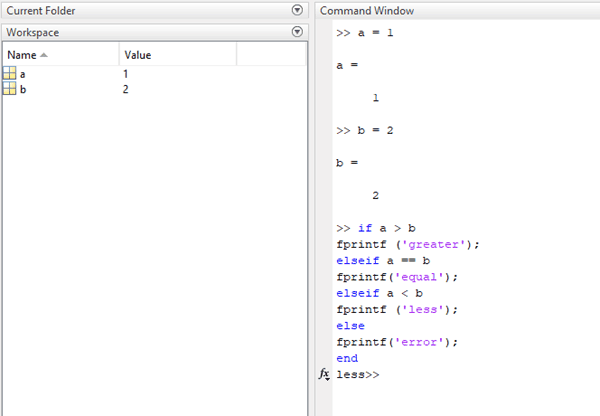
Julia has true one-dimensional arrays.Instead, users can use optional and keyword arguments to achieve similar capabilities. MATLAB's nargout, which is often used in MATLAB to do optional work based on the number of returned values, does not exist in Julia. In Julia, multiple values are returned and assigned as tuples, e.g.As a result, some operations can throw a domain error if they expect a float for example, julia> a = -1 2^a throws a domain error, as the result is not an integer (see the FAQ entry on domain errors for details). In Julia, literal numbers without a decimal point (such as 42) create integers instead of floating point numbers.The imaginary unit sqrt(-1) is represented in Julia as im, not i or j as in MATLAB.Julia has push! and append!, which grow Vectors much more efficiently than MATLAB's a(end+1) = val. Whereas in MATLAB a(4) = 3.2 can create the array a = and a(5) = 7 can grow it into a =, the corresponding Julia statement a = 7 throws an error if the length of a is less than 5 or if this statement is the first use of the identifier a. Julia does not automatically grow arrays in an assignment statement.If a function modifies an array, the changes will be visible in the caller. Julia values are not copied when passed to a function.After A = B, changing elements of B will modify A as well. Julia arrays are not copied when assigned to another variable.Julia arrays are indexed with square brackets, A.The following are some noteworthy differences that may trip up Julia users accustomed to MATLAB: There are major syntactic and functional differences.

Edit on GitHub Noteworthy Differences from other Languages Noteworthy differences from MATLABĪlthough MATLAB users may find Julia's syntax familiar, Julia is not a MATLAB clone.
#Matlab vs python if statements code#
Static analyzer annotations for GC correctness in C code.Proper maintenance and care of multi-threading locks.printf() and stdio in the Julia runtime.Talking to the compiler (the :meta mechanism).High-level Overview of the Native-Code Generation Process.Noteworthy differences from Common Lisp.Noteworthy Differences from other Languages.Multi-processing and Distributed Computing.Mathematical Operations and Elementary Functions.If you’re looking to break into AI or build a career in machine learning, the new Machine Learning Specialization is the best place to start. It provides a broad introduction to modern machine learning, including supervised learning (multiple linear regression, logistic regression, neural networks, and decision trees), unsupervised learning (clustering, dimensionality reduction, recommender systems), and some of the best practices used in Silicon Valley for artificial intelligence and machine learning innovation (evaluating and tuning models, taking a data-centric approach to improving performance, and more.)īy the end of this Specialization, you will have mastered key concepts and gained the practical know-how to quickly and powerfully apply machine learning to challenging real-world problems.

This 3-course Specialization is an updated and expanded version of Andrew’s pioneering Machine Learning course, rated 4.9 out of 5 and taken by over 4.8 million learners since it launched in 2012. This Specialization is taught by Andrew Ng, an AI visionary who has led critical research at Stanford University and groundbreaking work at Google Brain, Baidu, and Landing.AI to advance the AI field.
#Matlab vs python if statements how to#
In this beginner-friendly program, you will learn the fundamentals of machine learning and how to use these techniques to build real-world AI applications. The Machine Learning Specialization is a foundational online program created in collaboration between DeepLearning.AI and Stanford Online.

Build machine learning models in Python using popular machine learning libraries NumPy and scikit-learn.In the first course of the Machine Learning Specialization, you will:


 0 kommentar(er)
0 kommentar(er)
